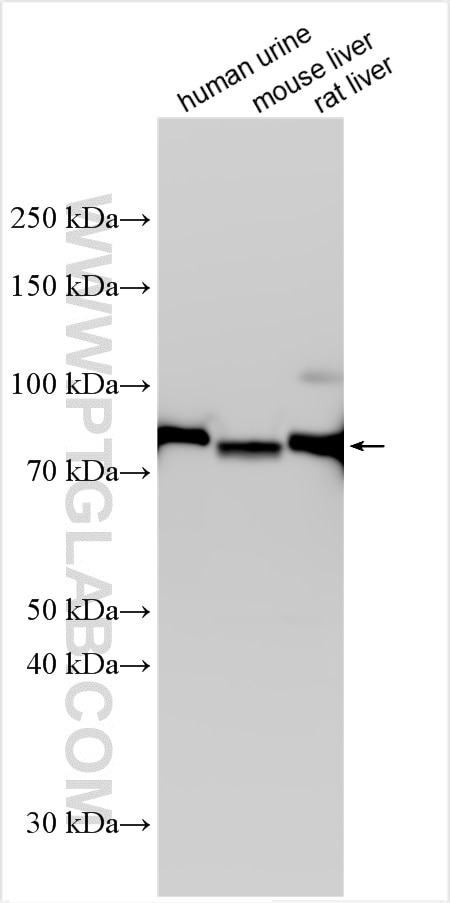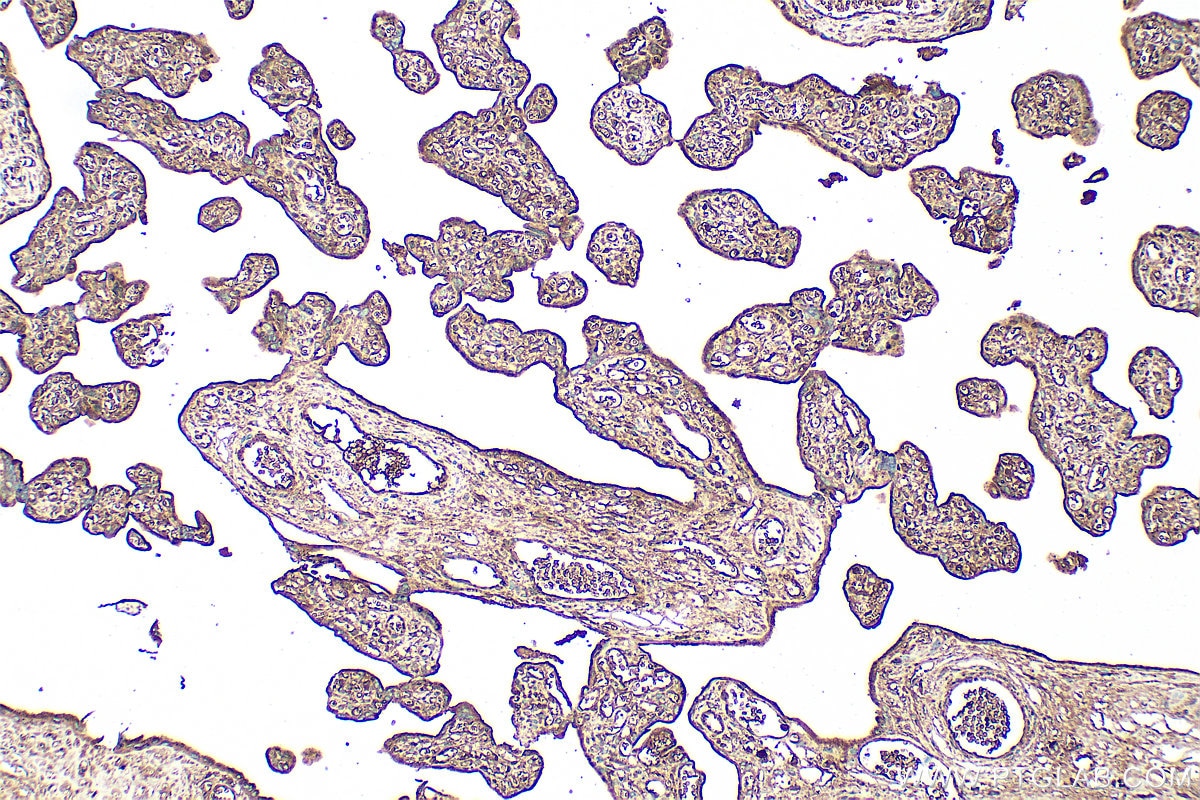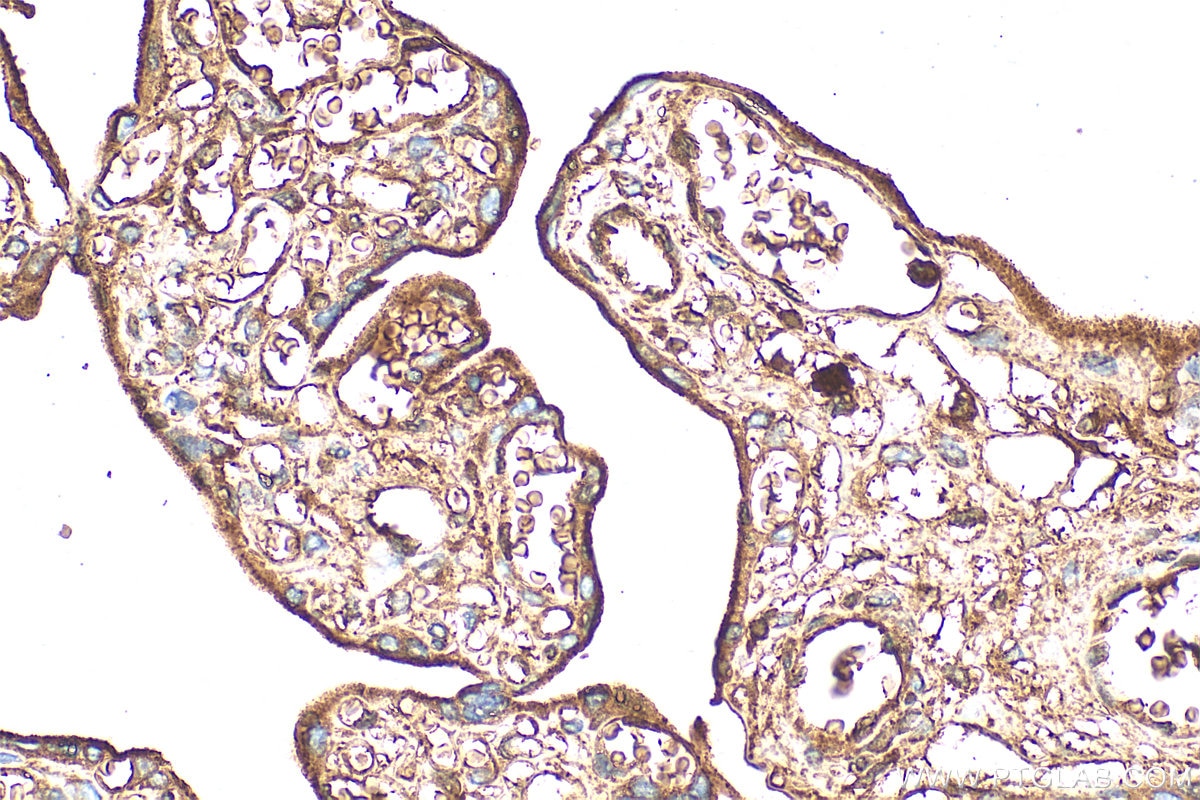Tested Applications
| Positive WB detected in | human urine sample, mouse liver tissue, rat liver tissue |
| Positive IHC detected in | human placenta tissue Note: suggested antigen retrieval with TE buffer pH 9.0; (*) Alternatively, antigen retrieval may be performed with citrate buffer pH 6.0 |
Recommended dilution
| Application | Dilution |
|---|---|
| Western Blot (WB) | WB : 1:1000-1:6000 |
| Immunohistochemistry (IHC) | IHC : 1:500-1:2000 |
| It is recommended that this reagent should be titrated in each testing system to obtain optimal results. | |
| Sample-dependent, Check data in validation data gallery. | |
Product Information
30337-1-AP targets Transferrin/TF in WB, IHC, ELISA applications and shows reactivity with human, mouse, rat samples.
| Tested Reactivity | human, mouse, rat |
| Host / Isotype | Rabbit / IgG |
| Class | Polyclonal |
| Type | Antibody |
| Immunogen | Transferrin/TF fusion protein Eg0114 Predict reactive species |
| Full Name | transferrin |
| Calculated Molecular Weight | 698 aa, 77 kDa |
| Observed Molecular Weight | 77 kDa |
| GenBank Accession Number | BC059367 |
| Gene Symbol | TF |
| Gene ID (NCBI) | 7018 |
| RRID | AB_3669712 |
| Conjugate | Unconjugated |
| Form | Liquid |
| Purification Method | Antigen affinity purification |
| UNIPROT ID | P02787 |
| Storage Buffer | PBS with 0.02% sodium azide and 50% glycerol, pH 7.3. |
| Storage Conditions | Store at -20°C. Stable for one year after shipment. Aliquoting is unnecessary for -20oC storage. 20ul sizes contain 0.1% BSA. |
Background Information
Serotransferrin(TF) is a 77 kDa secreted protein which is also named as transferrin, siderophilin, beta-1 metal-binding globulin and belongs to a family of homologous iron-binding glycoproteins that encompasses lactoferrin (found both intracellular and in secretions, including milk), melanotrasferrin (present on melanoma cells) and ovotransferrin (present in egg white). TF is a multi-function protein with a primary role in transporting iron in a safe, redox-inactive state from absorption to utilization or storage sites around the body. The association of Tf with the immune system derives from its ability to restrict serum free-iron levels, creating low-iron environments where the infection capacity of pathogenic microorganisms is limited. TF is expressed predominantly in the liver and secreted in plasma, but lower amounts can be synthesized in other tissues such as the brain and the testis.
Protocols
| Product Specific Protocols | |
|---|---|
| WB protocol for Transferrin/TF antibody 30337-1-AP | Download protocol |
| IHC protocol for Transferrin/TF antibody 30337-1-AP | Download protocol |
| Standard Protocols | |
|---|---|
| Click here to view our Standard Protocols |







